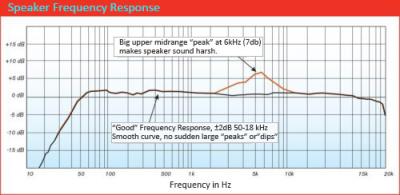What do you care about when picking up a new set of over ear headphones? Some factor like the look and comfort are personal preference. Headphones specifications are a surprisingly complicated business. Today I’m going to explain headphone frequency response, and tell you how to identify the best headset via headphone spec.
Frequency response indicates the range of audio frequencies the headphones can reproduce. It’s measured in Hertz, with the lowest number representing the amount of bass, and the highest treble. Most headphones have a stated frequency response of around 20-20,000Hz, which matches that of human hearing.
The numbers are not really a good indicator of sound quality, though they can help you choose the right headphones for a particular type of music. For instance, if you want lots of bass, then you should look for headphones that support a low bass frequency.
Learn to read headphone frequency response graphs

let's go over understanding headphone frequency response graphs. Often times reviewers use graphs to illustrate how great or poor is. You can better understand how well the <a href=”https://www.mixcder.com/Product/Bass-Noise-Isolation-Wireless-Bluetooth-V4.2-Headphones-With-aptX-Low-Latency-g057.html”>;wireless and wired headphone may perform by understanding how to read the graph. Again, this is not the only indication of how good a headphone is.
In theory, the line on a frequency response graph should be relatively flat line since the range demonstrates the headphone's ability to reproduce all frequencies equally. A "natural sounding" headphone is said to be slightly higher in the bass between 40Hz and 500Hz. That's where bass instruments and deep male vocals live, remember?!
If the line on the graph is slightly higher on the left side that means the headphones produce sound with more bass response. If the right side of the graph is higher than the left, that means the wireless headphones have a greater response in the mid, highs, and treble. That headset would be considered bright.
Bluetooth headphones have to compensate for the drivers being so close to the ear in the highs, so the highs are "rolled-off" and illustrated by a gradual sloping flat line from 1kHz to about 8-10dB down to 20kHz. In addition, small spikes at higher frequencies are normal as that is due to reflection cancellations in the folds and ridges in the outer part of the ear. But, sharp spikes in frequency (peaks and deep valleys) over 3,000Hz or so are indications of when the headphone sounds harsh.
So much for frequency response, please continue to follow next blog about headphone impedance.








